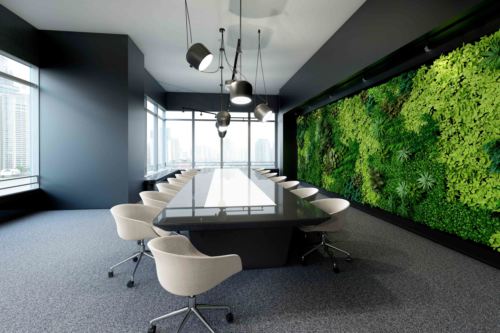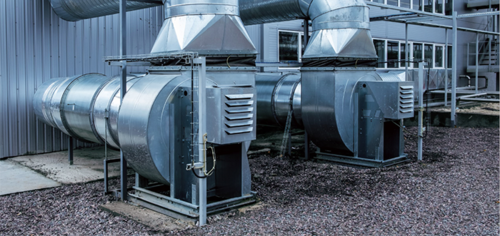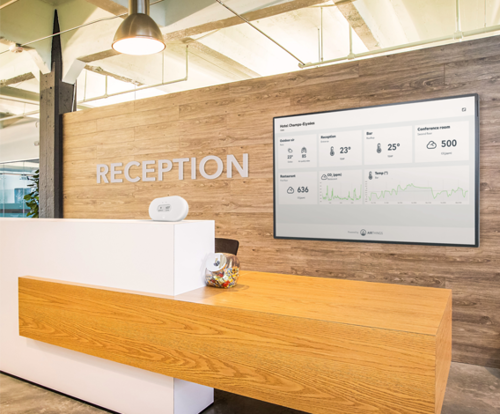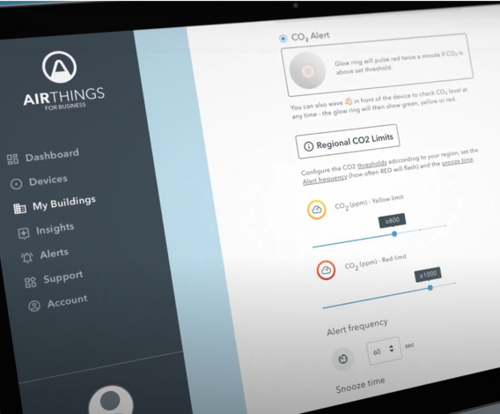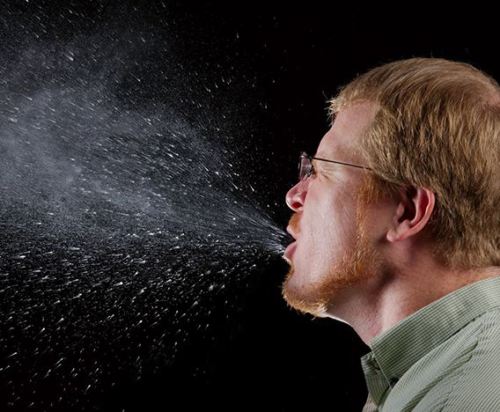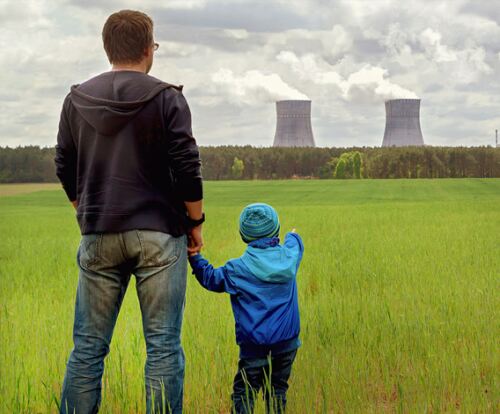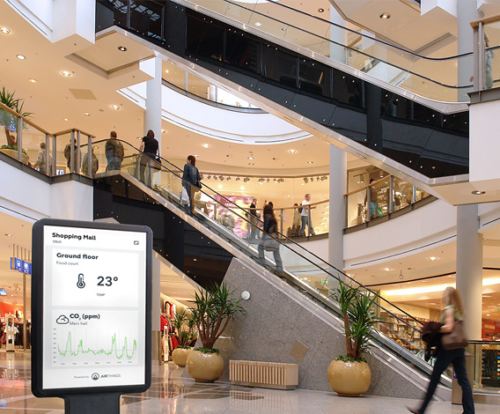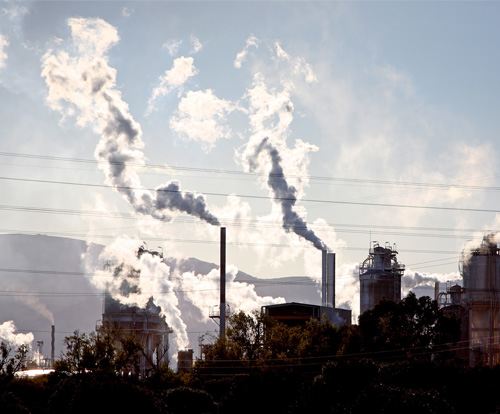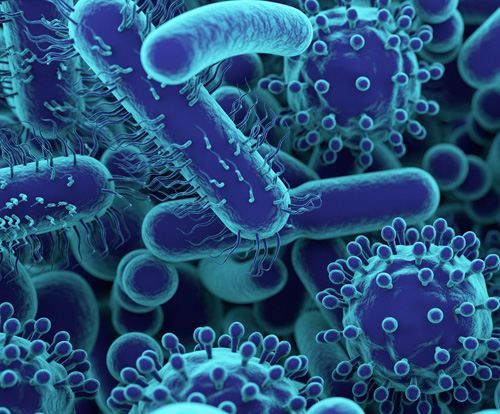
Ventilation and filtration
Data from recent Covid 19 outbreaks consistently show that a large fraction of buildings worldwide have very low ventilation rates, despite the requirements set in national building standards. In poorly ventilated spaces, virus pathogens can build up quickly, raising the risks of virus transmission.
Why is ventilation so important
Ventilation is the process of introducing fresh air into indoor spaces whilst removing stale air that may be hot and humid or contain pollutants and other impurities. Bringing fresh air into indoor spaces dilutes air containing virus particles and helps prevent the spread of viruses like Covid 19, flu and the common cold. Good ventilation also has additional benefits such as better concentration and decision making, improved wellbeing and increased productivity.
Bringing fresh air into a room and removing older stale air that contains virus particles reduces the chance of spreading respiratory infections. The more outdoor air that is brought indoors, the quicker any airborne virus will be removed from the room.
 The number of air changes per hour (ACPH) is specified for certain environments and in most cases it should be around six ACPH. ACPH measures how many times the air in the room is replaced in an hour. This animation from the Health & Safety Executive highlights the various ventilation strategies.
The number of air changes per hour (ACPH) is specified for certain environments and in most cases it should be around six ACPH. ACPH measures how many times the air in the room is replaced in an hour. This animation from the Health & Safety Executive highlights the various ventilation strategies.
But how do you know when ventilation is poor?

High quality indoor air quality sensors that monitor CO2 levels in indoor spaces will indicate when windows should be opened, or mechanical ventilation needs to be increased. Consistent levels of CO2 of 800ppm or less indicates a space is well ventilated and it is recommended to keep CO2 levels around this level, however, when readings are consistently over 1500ppm, action should be taken to improve ventilation.

If the opening of windows is your only means of ventilation then an outdoor air quality monitor will also indicate when ambient air quality is poor, so windows can be kept closed until the danger has passed. These spikes in outdoor pollution are usually during rush hour at both ends of the day, when there are wild fires nearby and when low level ozone is present (haze).
How to improve ventilation
Buildings are ventilated by natural systems including vents, windows and chimneys, or by mechanical systems such as heating, ventilation and air conditioning (HVAC) systems, extractor fans or air conditioning (not recirculating units).
Natural ventilation in small buildings
Many older buildings are naturally ventilated through small cracks in the fabric of the building, air bricks and vents. However, some new buildings are being designed with natural ventilation, to help reduce their reliance on energy for ventilation, therefore improving the building’s sustainability profile. Windows, louvres and roof stacks can all be automated and managed by the building management system (BMS) that takes real-time data from air quality monitoring sensors. Buildings in high pollution belts or in densely built up areas are not usually suitable for a natural ventilation strategy as outdoor pollution can be brought into the building.
You must be able to prove that your indoor spaces are adequately ventilated, and this is where air quality sensors come in once again, as they monitor the air 24/7, and CO2 levels will indicate if the ventilation system is working to the required level.
Opening windows and doors is the simplest way of improving ventilation in most small buildings like nurseries, primary schools and small business premises that don’t have mechanical ventilation.
If windows have openings at both the top and the bottom, using just the top opening will help incoming fresh air warm up as it mixes with room air, reducing cold draughts. In warmer weather, using both the top and bottom openings will help provide even more airflow. Opening windows and doors at opposite sides of the room will also provide a good flow of outdoor air, called cross ventilation. In colder weather, opening windows slightly can also provide ventilation and lead to fewer cold draughts.

Also, trickle vents in windows should be kept open and grilles and air bricks not blocked as they help ventilate indoor spaces and keep rooms a comfortable temperature. The weather can affect the amount of air that flows through openings, in cold or windy weather, a smaller opening can be just as effective at bringing in fresh air as a larger opening when the weather is calm and warm.
Mechanical ventilation in small buildings
If your building has a mechanical ventilation system, make sure this is working and maintained in line with the manufacturers’ instructions. Setting ventilation systems to maximise outdoor air over recirculated air will help dilute indoor air that may contain pollutants and viruses. AC systems that only recirculate indoor air will not be able to remove airborne viruses, particles or other pollutants from the air, and even the best filters cannot remove CO2, so additional means of ventilation should be used.
Ventilation in workplaces and public buildings
Good ventilation can reduce the spread of respiratory infections, including Covid 19, in commercial buildings and help promote wellbeing and productivity.
“Regulation 6 of the Workplace Health, Safety and Welfare Regulations, states that employers must ensure that every enclosed workplace is ventilated by a sufficient quantity of fresh or purified air.”

Mechanical ventilation systems are often called heating, ventilation and air conditioning (HVAC) systems as they are able to heat or cool the incoming air, ensuring indoor environments are optimised for comfort, as well as the health and wellbeing of building occupants. Mechanical ventilation should be set to maximise incoming air from outside and not set to recirculate indoor air.
These systems are managed by a building management system (BMS) and when air quality monitors are integrated with the BMS, lighting, temperature and ventilation levels can be automatically adjusted per room or zone. This way of managing modern HVAC systems also ensures that when parts of the building are not in use (very low levels of CO2) energy can be reduced by automatically turning off lights and reducing heating or cooling in that part of the building. These modern systems can create significant cost savings, reduce energy consumption and carbon emissions.
A note of caution here – not all AC systems are able to introduce fresh air to the mix as they are only intended to recirculate and cool indoor air.
A note of caution here – not all AC systems are able to introduce fresh air to the mix as they are only intended to recirculate and cool indoor air. In these circumstances, air purifiers should be used to help catch particles and viruses, however, this should be a short term fix and the ventilation system in the building should be upgraded.
Air changes per hour (ACPH) measures how many times the air in a room is replaced. Higher ACPH values mean better ventilation and the recommended number of air changes per hour is six in most workplaces and public spaces, with this number being increased to eight in meeting rooms, ten in toilets and twelve in restaurants and cafes.
Heating, ventilation and air conditioning (HVAC) and other types of mechanical ventilation systems have the ability to significantly improve health and wellbeing in a building, by replacing stale air with filtered outdoor air. However, mechanical ventilation systems must be regularly maintained and cleaned to avoid the build-up of pathogens, and subsequent exposure to building occupants. The filters should be regularly cleaned and replaced and the ducting also thoroughly disinfected. Some modern systems include ultraviolet germicidal irradiation, or UVGI, that kills micro-organisms using UVC light installed within the central HVAC system to reduce contamination of drip pans and cooling coils.
Air cleaning technology
Air cleaning devices are not a substitute for good ventilation, however where it’s not possible to maintain good ventilation, air cleaning or purification units that use HEPA filters or UV technologies could be a useful alternative for reducing airborne transmission of viruses.

High quality air purification and sterilisation units can remove contaminants from the air, including bacteria and viruses, making for safer indoor spaces. They cannot, however, reduce or remove CO2, so it’s advised to open windows regularly, avoiding rush hour at both ends of the day. The introduction of fresh air will reduce CO2 which can be detrimental to health in its own right, and the filtration units will deal with other pollutants including PM, NO2, VOCs, pollen, mould spores and viruses.
Before purchasing an air purification unit check that it incorporates a HEPA13 filter as a minimum, that will capture 99.9 percent of particulate matter down to 1µg/m³ (micrograms per cubic meter of air), and preferably also uses a high grade activated carbon filter to reduce chemical pollutants (VOCs), NO2 and other gases. Some units also use UVC light to kill 99.9 percent of airborne bacteria and viruses by damaging molecules in proteins, although these are more expensive and mostly used in a healthcare setting.
It’s crucial to purchase an air purifier that meets the size requirements of the intended room and at least one purifier will be needed per room.
Latest Articles
The business risks emerging from the global COVID-19 pandemic
Read More >Why indoor spaces have a higher risk of virus transmission
Read More >Enhance HVAC performance, improve energy efficiency and reduce emissions
Read More >High absenteeism and reduced wellbeing
Read More >How does air quality affect your business
Read More >What the experts say
Read More >Risk indicators and monitoring
Read More >Transmission & Prevention
Read More >The History of Air Pollution
Read More >Ambient Air Pollution
Read More >Indoor air pollution & the indoor generation
Read More >Climate change and the climate emergency
Read More >What’s in the air we breathe outdoors?
Read More >What’s in the air we breathe indoors?
Read More >Other indoor biological pollutants
Read More >How air pollution affects our lives
Read More >